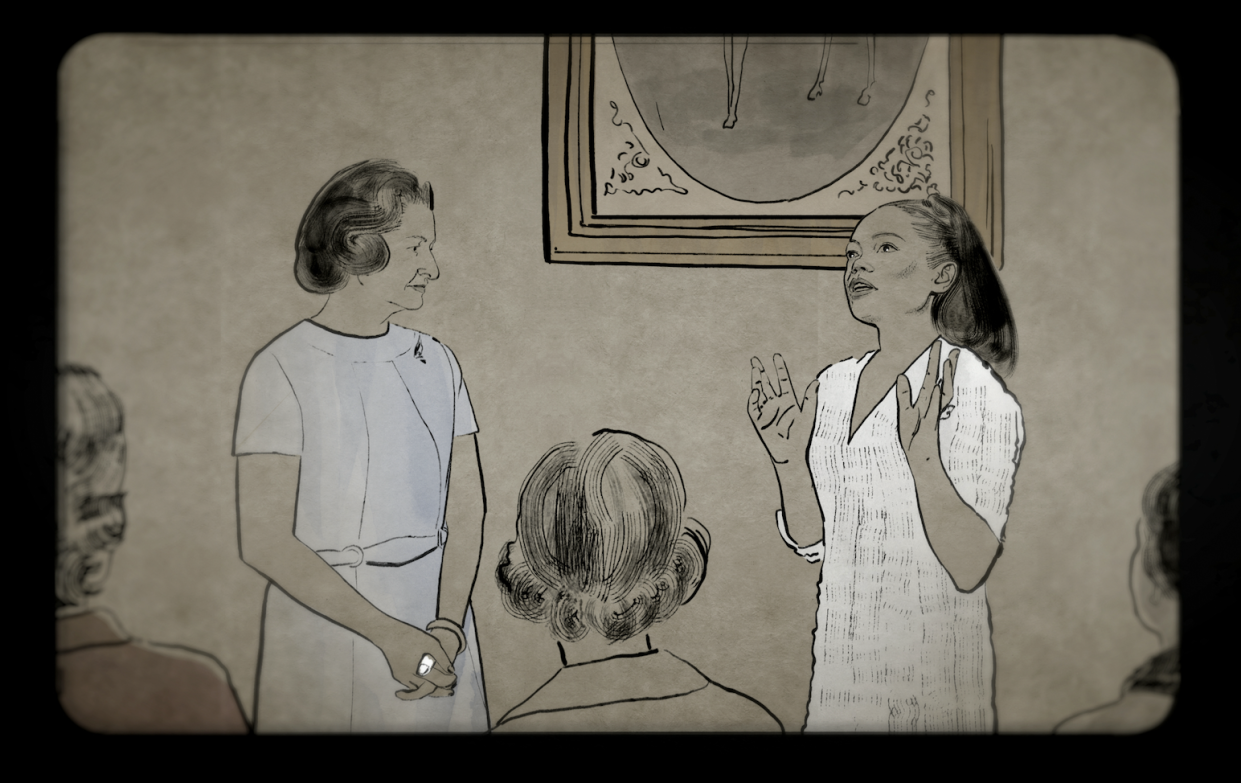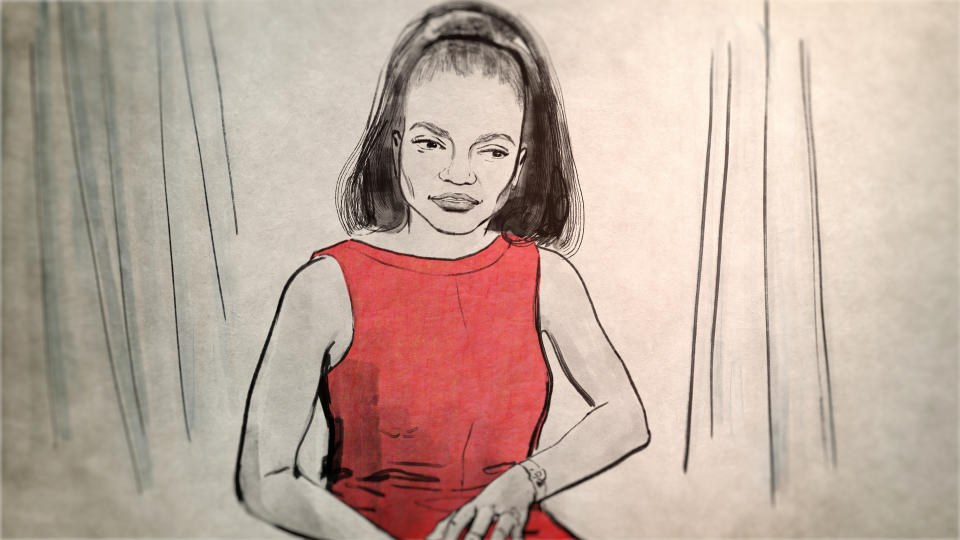‘The Lady Bird Diaries’ Documentary Stylishly Brings History to Life — Including an Infamous Encounter with Eartha Kitt

- Oops!Something went wrong.Please try again later.
- Oops!Something went wrong.Please try again later.
- Oops!Something went wrong.Please try again later.
“She sat down, stubbed out a cigarette, tossing her long hair and from then on I watched her expecting something — I didn’t know what. Apparently she did not eat, nor did she clap for any of the other speakers. She smoldered and smoked.”
That passage is First Lady Lady Bird Johnson’s description of Eartha Kitt at a White House luncheon — a meal that would come to define both women’s legacies — from her White House diaries, a meticulous account of Lyndon B. Johnson’s five years as president. As shown in “The Lady Bird Diaries,” a gorgeous and haunting new documentary from Dawn Porter (“John Lewis: Good Trouble”), the First Lady was right to expect something.
More from IndieWire
Recreated thanks to an uncanny combination of Lady Bird and Kitt’s own voices, footage filmed at the event, and evocative illustrations from Molly Schwartz, we see history come to life as Kitt denounces the war in Vietnam directly to Lady Bird — and in front of the press.
The moment stalled Kitt’s career and history has reduced Lady Bird’s reaction to that of a tearful (or vengeful) victim, even landing a segment on an episode of “Drunk History.” But history is rarely so neatly summarized, and for the first and only time in the documentary, Porter brings another voice into the proceedings to offer a different slant on what happened.
“This [encounter] is a big deal within the framework of the documentary; we want to make sure that this is played for all perspectives,” Porter told IndieWire. “Eartha Kitt really didn’t work that much after that incident, and so her voice also gets really silenced. They each had such strongly held views about what happened, and I really felt like the best way to show that is to have each of them tell it from their perspective. So we did kind of break the convention a little bit. We don’t do that any other place in the film. And it was to say, ‘This moment is so important that they both get their say here.’”
The storytelling devices at play in “The Lady Bird Diaries” are on thrilling display within the segment — most notably what turned out to be Lady Bird’s almost total recall of details. We hear her describing Kitt sitting and waiting as we watch her sitting and waiting — and the archival footage matches the narration recorded hours later.
“That’s what’s great about Lady Bird,” producer Kim Reynolds told IndieWire. “She would describe things, and then we would find the footage, and it was exactly how she described it.”

When archival materials weren’t available, Porter and Reynolds turned to Porter’s frequent collaborator Schwartz for illustrations, which were so thoroughly researched and fact-checked that even the TV sets pictured were the right type for that era.
“She really gets into the DNA of the film and then draws her inspiration from that,” Porter said. “Those are all hand-drawn and then animated. She wasn’t just copying a picture, she had to imagine the scene, and we would describe the scene to her. A lot of filmmakers are curious and enthralled and terrified of animation, that it’s going to look cartoonish, it’s going to ruin your movie and look like a cheat and detract. So it really was where we felt like it was an important story that we didn’t quite have enough archive to illustrate, but we had some.”
There was always Lady Bird’s own voice to fall back on (not to mention her handwriting, which Schwartz used for the title cards) and carry “The Lady Bird Diaries” forward. “Her words are like poetry, they’re very lyrical, and I think that that’s why people are getting so just immersed in the sound of her voice,” Reynolds said. “It’s really the score of the film.”
The documentary — in the wake of the book and a podcast — goes a long way to restoring Lady Bird’s image as someone who set history in motion beyond planting wildflowers on the sides of highways. In it, she’s revealed to be a driving force behind President Johnson’s success (we hear her offering him sharp critiques of his speeches) and as a public servant always looking for ways to better the country. But the film also renders the players in rich detail, something that history rarely affords them. Nowhere is it more telling than in the Kitt sequence or in Lady Bird’s interactions with her predecessor, Jackie Kennedy.
“These are people, [but] we treat them as these kind of stone icons and they are flattened in a way to their assigned place in history,” Porter said. “Jackie is the elegant one, Lady Bird planted flowers, Lyndon Johnson is an ogre. And instead, they’re like everybody. They have their good days and bad days. They are full human beings and each of them is doing their best to get to a certain goal.”
“The Lady Bird Diaries” is now streaming on Hulu.
Best of IndieWire
Where to Watch This Week's New Movies, from 'The Hunger Games' and 'Saltburn' to 'May December'
The Best Thrillers Streaming on Netflix in November, from 'Fair Play' to 'Emily the Criminal'
Sofia Coppola Movies, Ranked: 'Priscilla,' 'The Virgin Suicides,' 'Marie Antoinette,' and More
Sign up for Indiewire's Newsletter. For the latest news, follow us on Facebook, Twitter, and Instagram.

